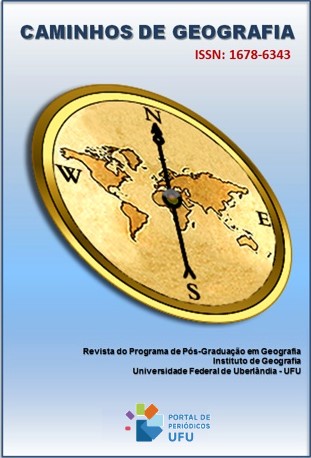INVENTORY AND QUANTITATIVE ASSESSMENT OF THE GEOMORPHOLOGICAL HERITAGE OF THE BATURITÉ MASSIF (CE)
DOI:
https://doi.org/10.14393/RCG249365269Keywords:
Geomorphology, Sites of geomorphological interest, GeoconservationAbstract
The Maciço de Baturité region in Ceará (Brazil) has a geomorphological configuration resulting mainly from Cretaceous crustal deformations, lithological diversity and differential erosion. Ridges, rocky domes and slopes form viewpoints that, like several waterfalls, are important tourist attractions. In this context, this work presents the first inventory and quantitative assessment of geomorphological heritage carried out in the region. The main objective was to identify places of geomorphological interest with didactic/interpretative and tourist/recreational value to insert them in conservation and environmental education proposals, aiming to contribute to their valorization and protection. The inventory took place through a bibliographic/cartographic survey, consultation with specialists and fieldwork. Then, the quantification of heritage values (scientific, educational and tourist/recreational) and susceptibility to degradation was carried out, which determined the priorities of protection of each location. Altogether, 17 sites of geomorphological interest were inventoried and evaluated. The evaluated values were classified as medium, high and very high; the susceptibility to degradation was moderate to high; and the calculation of protection priorities indicated the need for protection in the short and medium terms. These results may help to propose conservation measures for the region, through actions aimed at the profile of each location.
Downloads
Downloads
Published
How to Cite
Issue
Section
License
Copyright (c) 2023 Andrea César da Silveira, Frederico de Holanda Bastos, Suedio Alves Meira

This work is licensed under a Creative Commons Attribution-NonCommercial-NoDerivatives 4.0 International License.
Autores que publicam nesta revista concordam com os seguintes termos: a) Autores mantém os direitos autorais e concedem à revista o direito de primeira publicação, com o trabalho licenciado sob a Creative Commons Atribuição-NãoComercial-SemDerivações 4.0 Internacional. b) Autores têm permissão e são estimulados a publicar e distribuir seu trabalho online (ex.: em repositórios institucionais ou na sua página pessoal), já que isso pode gerar alterações produtivas, bem como aumentar o impacto e a citação do trabalho publicado. c) Em virtude de aparecerem nesta revista de acesso público, os artigos são de uso gratuito, com atribuições próprias, em aplicações educacionais e não-comerciais.











